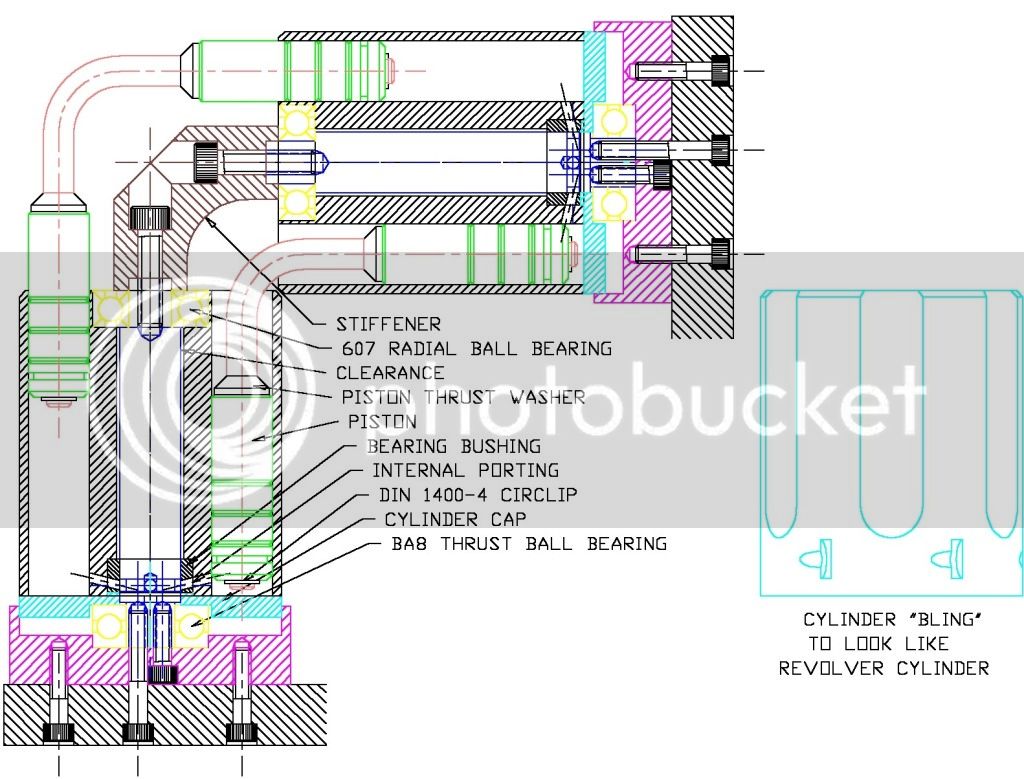Spurred on by the thread "elbow engine leaks too much" I have been posting to try and get some suggestions for a less leaky elbow engine design.
Captain Jerry has provided some valuable input.
Herewith the design so far :-
Using internal porting via the shaft with a cover plate bolted to the base of the cylinders I'm trying to eliminate the leakage from the exposure to the full piston diameter / clearance.
Any leaks will be confined to the bushing / shaft clearance instead.

Since all the thrust will be backwards there is a thrust ball bearing - unconstained diametrically to the cylinder to prevent binding due to concentricity issues.
I have incorporated a bushing as per Captain Jerry's suggestion and a radial ball bearing at the top, the cylinder then turns on 7mm of 10 diameter shaft (3.5mm ether side of the porting for sealing), the radial bearing at the top and the thrust bearing at the bottom.
I've added a hardened thrust washer to the elbow for the piston thrust face, this will either be a push fit or locktite to the elbows.
I am considering making a turning fixture for the elbows - they would still be bent from rod - but the 4mm piston running diameter would be machined in the fixture after bending to get it dead square.
I have only a rudimentary flywheel sketched in at the moment - I'm hoping to build a motor that will run without it as I want to add some "bling" features to the cylinders to make them look like a revolver cylinder.
Hence the name "Six Shooter"
Ken
Captain Jerry has provided some valuable input.
Herewith the design so far :-
Using internal porting via the shaft with a cover plate bolted to the base of the cylinders I'm trying to eliminate the leakage from the exposure to the full piston diameter / clearance.
Any leaks will be confined to the bushing / shaft clearance instead.

Since all the thrust will be backwards there is a thrust ball bearing - unconstained diametrically to the cylinder to prevent binding due to concentricity issues.
I have incorporated a bushing as per Captain Jerry's suggestion and a radial ball bearing at the top, the cylinder then turns on 7mm of 10 diameter shaft (3.5mm ether side of the porting for sealing), the radial bearing at the top and the thrust bearing at the bottom.
I've added a hardened thrust washer to the elbow for the piston thrust face, this will either be a push fit or locktite to the elbows.
I am considering making a turning fixture for the elbows - they would still be bent from rod - but the 4mm piston running diameter would be machined in the fixture after bending to get it dead square.
I have only a rudimentary flywheel sketched in at the moment - I'm hoping to build a motor that will run without it as I want to add some "bling" features to the cylinders to make them look like a revolver cylinder.
Hence the name "Six Shooter"
Ken






